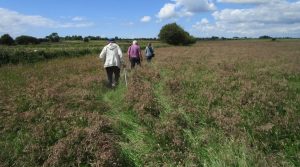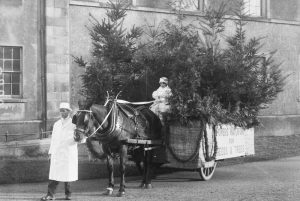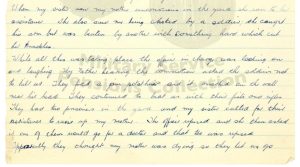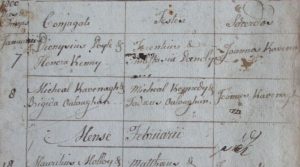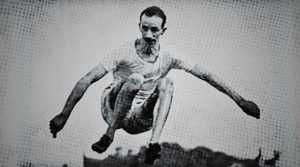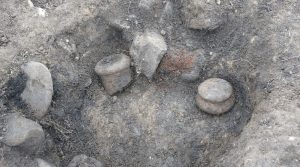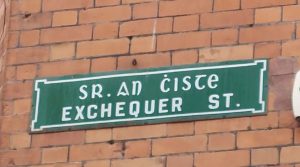Colcannon, a dish made with mashed potatoes and cabbage, was traditionally enjoyed on Halloween night in nearly every corner of Ireland, with local customs and regional variations in ingredients shaping how it was prepared and served.
Before the barmbrack came to dominate, colcannon (cál ceannann) was the food that marked out Halloween night as special. This simple yet comforting dish – made from potatoes, cabbage, milk and butter – was once central to Halloween celebrations in most Irish homes.
Sign up to our newsletter
Accounts in the 1930s Schools’ Folklore Collection show colcannon being eaten in almost every county in Ireland, though it was less common in Cork, Kerry, Limerick, Offaly and Donegal. The dish was especially popular in Wexford and in other parts of Leinster, as well as in Connacht. In much of Connacht and in parts of Ulster, it was affectionately known as “cally” or “callie”. So closely was the dish associated with Halloween that in parts of Leinster, that night became known as “Colcannon Night”.
Traditionally, potatoes and cabbage were boiled together in a single large pot over an open fire, then pounded with a wooden pounder or beetle once cooked, before adding the butter and new milk – milk very recently drawn from a cow and chosen for its creaminess. Colcannon was usually eaten on its own or with oaten bread, with everyone sharing from the same bowl or plate using large spoons.
A D V E R T I S E M E N T
Regional traditions
The basic ingredients of colcannon are potatoes, cabbage, milk and butter, but additional ingredients vary by region. Depending on local custom, the recipe might also call for onions, spring onions (scallions), baby leeks, chives, parsley, parsnips or carrots, while in some areas curly kale was used instead of cabbage. In Wexford, the large outer cabbage leaves were sometimes used as a lid for the pot to trap the steam. In certain counties, the term colcannon referred simply to mashed potatoes or champ, and did not include cabbage or kale.
>>> YOU MIGHT ALSO LIKE: A real Halloween horror: the manslaughter case that shook Fermanagh in 1916
In many parts of Ireland, a ring was hidden in the colcannon before serving. In some areas, other small objects were added too, such as a coin (like a threepenny bit, sixpence, shilling or a half-crown if you were very lucky), a thimble, a piece of cloth, a button or a bean. The ring foretold marriage within a year, while the coin symbolized luck or wealth – though in some places it carried the opposite meaning. The thimble indicated a tailor for a husband, the button or cloth signified that the recipient would never marry or would be poor and the bean represented good fortune or prosperity. The meanings of these objects, however, varied between regions and often contradicted one another. These customs were later transferred to the barmbrack.
In Leinster and Connacht, there was also a belief that some of the dish should be left out on a spoon or in a bowl for the fairies, the “good people”, the púca or the poor souls. In Lettera, Co. Galway, the first plate of colcannon was kept for the fairies, with no salt added to their share.
>>> YOU MIGHT ALSO LIKE: Mourning and warning: tracing the banshee in Mayo lore
A F F I L I A T E A D

A traditional colcannon recipe
Serves 4
Ingredients:
- 1kg potatoes (Golden Wonders or Kerr’s Pinks), peeled and diced
- 400g savoy cabbage (or curly kale for the Limerick tradition), finely sliced
- 100ml approx. whole milk
- 3 tablespoons salted butter
- Salt and white pepper to taste
>
Optional additions (regional variations):
- 1 bunch spring onions, finely sliced
- 1 parsnip, peeled and diced (Wexford and Carlow tradition)
- 1 carrot, peeled and diced (Wexford tradition)
- Small bunch fresh parsley, finely chopped (Westmeath and Kildare tradition)
>
Some traditional recipes also include brown onions or baby leeks. If using these, they should be fried first, although older recipes often called for raw onions to be added just before serving or for them to be boiled with the potatoes and cabbage, or in the milk.
Method:
- Place the diced potatoes (and any parsnip or carrot if using) in a large pot of cold water with a good pinch of salt. Cover with a lid and bring to the boil.
- After about 10 minutes or so, when the potatoes are beginning to soften, pour off two-thirds of the water. Cover again and let them steam on a low heat until tender.
- Meanwhile, in a separate pot, boil the cabbage (or kale) in a little water until soft. Drain, season and stir in a small knob of butter.
- When the potatoes are tender, remove from the heat, drain into a colander and return them to the pot.
- Bring the milk to the boil in another pan.
- Mash the potatoes while warm, adding the hot milk and most of the butter until smooth and creamy. Stir in the cooked cabbage and seasoning (and, if using, add the raw spring onions, fried onions or leek and parsley at this point too). The consistency should be soft but not runny – add more milk or butter as needed.
- If necessary, return the pot to a low heat and warm gently for a minute or two before serving.
Please help support
Irish Heritage News
A small independent start-up in West Cork
Give as little as €2
Thank You
Serving suggestions:
When it’s ready to serve, remember to wrap the ring, coin and other objects in parchment paper before hiding them in the colcannon.
Serve immediately in a hot bowl. Make a well in the centre for a generous knob of butter – the butter melts in the heat of the colcannon.
Colcannon can be eaten on its own as a main dish, though today it is more likely to appear as a side dish with bacon.
Listen to this traditional song about making colcannon while you cook:
Advertising Disclaimer: This article contains affiliate links. Irish Heritage News is an affiliate of FindMyPast. We may earn commissions from qualifying purchases – this does not affect the amount you pay for your purchase.
READ NOW
➤ Forgotten ghost story by Dracula author Bram Stoker rediscovered in Dublin library
➤ Irish genealogy news round-up, October 2025
➤ Mass grave in Pennsylvania could contain remains of over 100 Irish railroad workers
➤ The American tours of the Dublin Players, 1951–58
➤ Tracing John F. Kennedy’s Irish ancestry through Wexford, Limerick, Cork and Fermanagh
A D V E R T I S E M E N T


